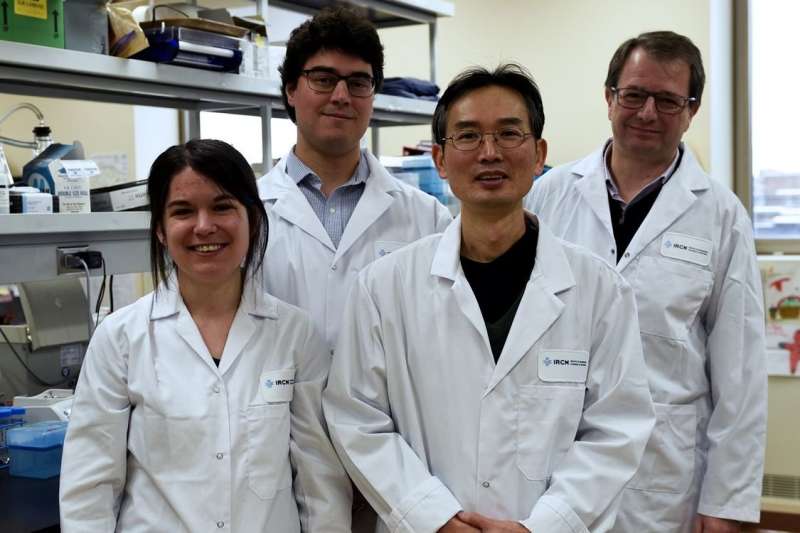Understanding how leukemia and lymphoma cells resist treatment

In a study published in Nature Communications, a team led IRCM Hematopoiesis and Cancer Research Unit director Tarik Möröy reveals how the GFI1 protein sometimes helps leukemia and lymphoma cancer cells evade therapy. This discovery could eventually help orient patients towards more effective treatment by considering the particular characteristics of their disease.
In this Q&A, Möröy and his team offer an overview of their findings.
What is this research project about?
One of our goals is to understand more precisely the mechanisms involved in the response to treatments designed for leukemia and lymphoma, two cancers linked to overproduction of blood cells. Although we understand the main mechanisms of these diseases, we are still missing many of their subtleties.
How do most cancer treatments work?
Cancer cells multiply quickly and in a way that is out of control; this is how tumours are formed. The goal of cancer treatments is to destroy these cells. In order to achieve this, doctors use radiotherapy and chemotherapy, which damage the DNA of the cancer cells, thereby destroying them or preventing them from multiplying.
In this study, we were interested in a protein that plays a role in the development of leukemia and lymphomas, the GFI1 protein. We already knew that it could affect the survival of cancer cells following treatments, but we did not understand how. We wanted to grasp GFI1's role in this dynamic. In order to accomplish this, we conducted experiments on mouse models and cultures of human cells.
Why is it important to understand how these treatments work?
Thanks to scientific advances, therapeutic options such as radiation and chemotherapy are now available to stop leukemia and lymphoma, and they often lead to remission. However, these treatments can have severe side effects, and they sometimes prove to be ineffective. By gaining more knowledge about them, we could more effectively direct each patient to the therapy that best suits him or her. A personalized treatment would increase the chances of success, while reducing unnecessary side effects.
What did your research reveal?
Our study shows that the GFI1 protein interacts with an enzyme, PRMT1, which, in turn, chemically modifies and activates proteins responsible for repairing DNA breaks. This new function for GFI1 is a new piece of the puzzle to understand how cells repair their DNA.
Ordinarily, GFI1 is necessary for the repair of healthy cells. The problem is that GFI1 is often overexpressed in cancer cells: in these cases, GFI1 can help them resist certain treatments, since GFI1 helps to repair DNA breaks caused by radiotherapy or chemotherapy.
Could this study lead to therapeutic advances?
Ultimately, we hope this research will lead to even more effective decision-making in the clinical setting. For example, patients could be referred to the most appropriate treatment according to the level of GFI1 activity in their cancer cells. It could also be possible to make tumours more sensitive to these treatments by targeting the mechanisms of DNA repair affected by GFI1.
Finally, we hope that the principles presented in this study will also be applicable to other types of tumours in which we suspect GFI1 to be involved, including brain tumours such as medulloblastomas, the most common and most dangerous type of brain tumour in children. Sometimes scientific research appears to address a narrow field, but its repercussions can extend well beyond.

















